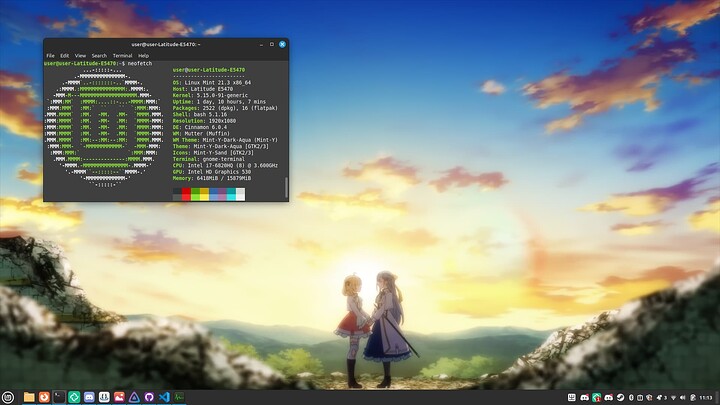I recently picked an old Dell E5570 laptop from eBay to use as a secondary machine. Specs as follows:
- Intel Core i7-6820HQ
- 8GB x2 DDR4
- 256GB SSD
- AC Wifi (Not sure if DW1820 or AC8260)
I intend to use this as a secondary machine for messing around / backup machine, and I intend to use Linux on it. I need some help picking a distro.
My needs for it as a backup machine:
- Office tasks such as word processing, spreadsheets etc.
- Web browsing / media consumption (I use Firefox for my main browser)
- Light gaming (All games I care about either run fine through Proton or have native Linux support)
- Coding (I use VSCode for Python and Jetbrains suite for everything else)
What I would like to get out of the distro:
- Good battery life (not expecting macbook levels but would want a few hours off the wall)
- Good trackpad support (not expecting macbook levels but would like two finger gestures to work)
- Lightweight and minimal junk (cough cough Windows 11), won’t constantly sound like taking off (I swear every course I have there’s always someone’s windows laptop sounding like a jet engine)
Clear out some contradictory things:
I bought a machine with a quad core for performance reasons and I know that a dual core is better for battery life. However even with 4 cores it is already getting destroyed by modern smartphone chips according to Geekbench. I don’t even want to think about how much of a disaster the dual core chips would be when trying to do serious work.
What I already use in other places:
- Ubuntu 20.04, 22.04, 23.10 on servers
- Ubuntu 20.04, 23.10 on PCs
- Arch Linux on PC at home (w/ gnome, kde but not too happy with either)
My main issues with gnome:
- Dash-to-dock is buggy in games running windowed (non issue for laptop)
- No easy way to restart ibus daemon (I need this for typing Chinese and it starts behaving weirdly after ~3days of uptime)
My main issues with KDE Plasma:
- I hate Dolphin
- General rough edges
Current contenders (alternatives welcome):
- Linux Mint w/ Cinnamon (+familiar debian/ubuntu environment), currently leaning towards this one
- Pop_OS! (+familiar debian/ubuntu environment, -gnome, -battery life reportedly not great)
- Fedora (-gnome)
- Ubuntu 24.04 Beta (+familiar debian/ubuntu environment, -gnome, -snaps)
- openSUSE tumbleweed w/ XFCE (listing because its something I would like to try out)
